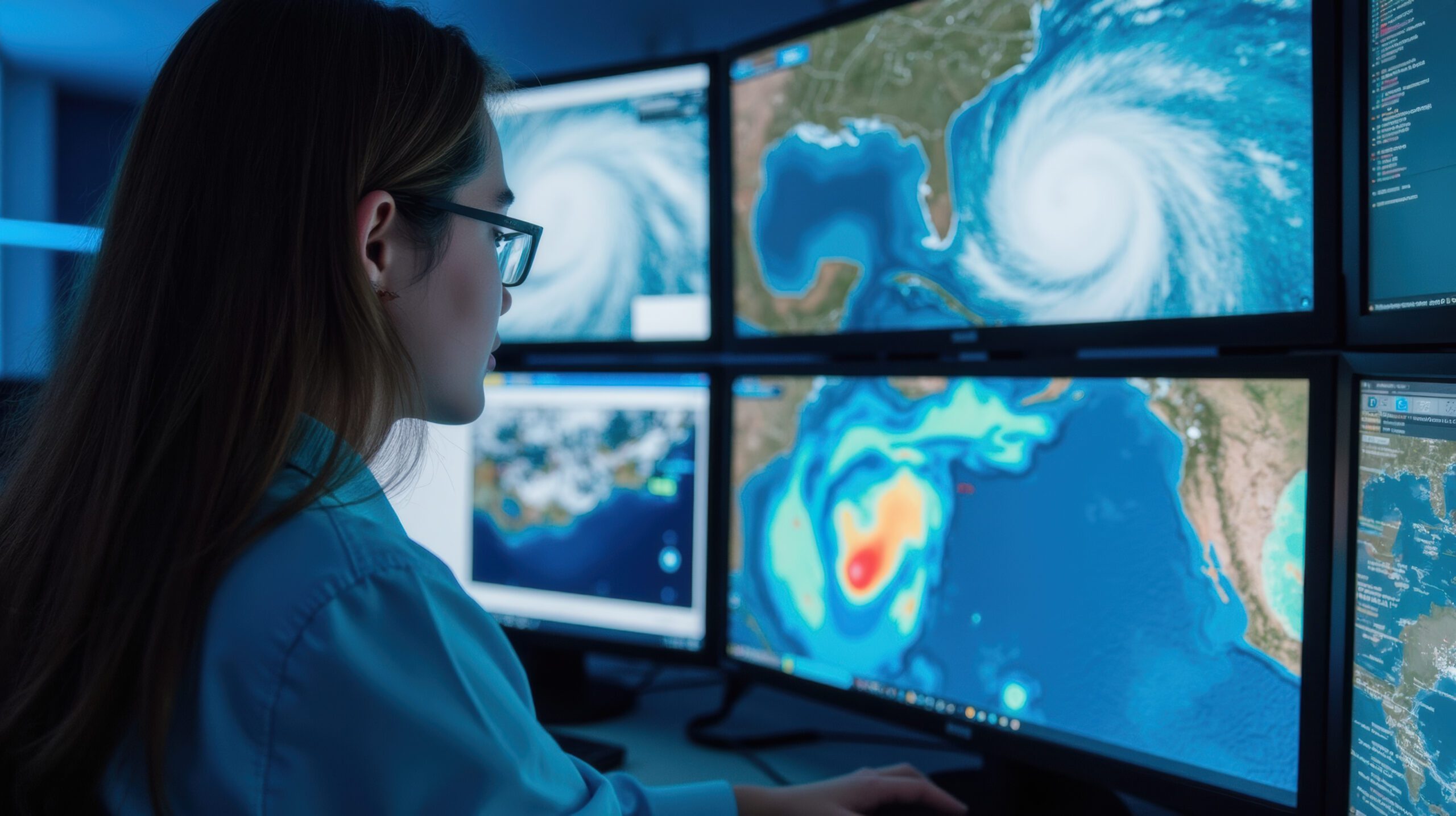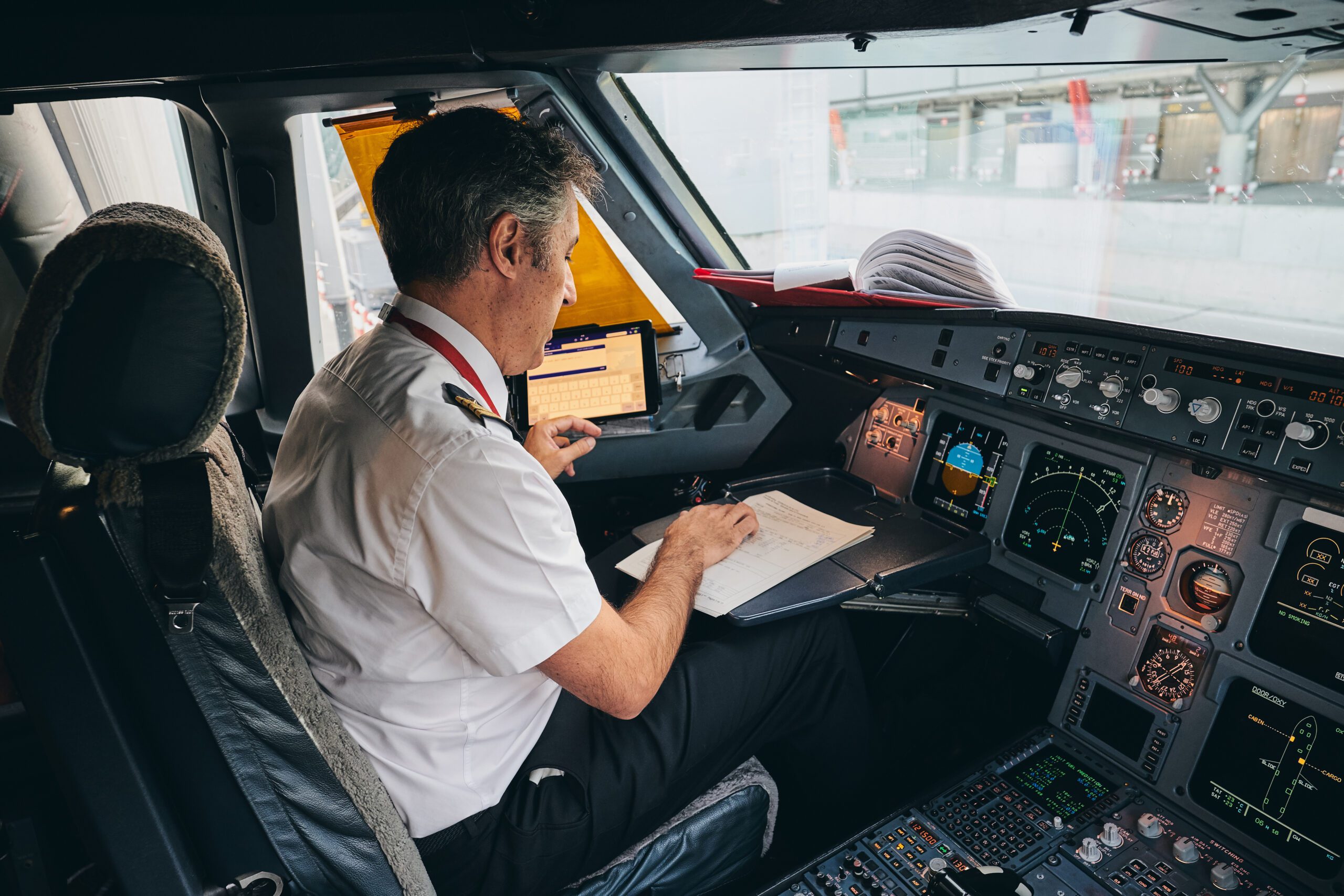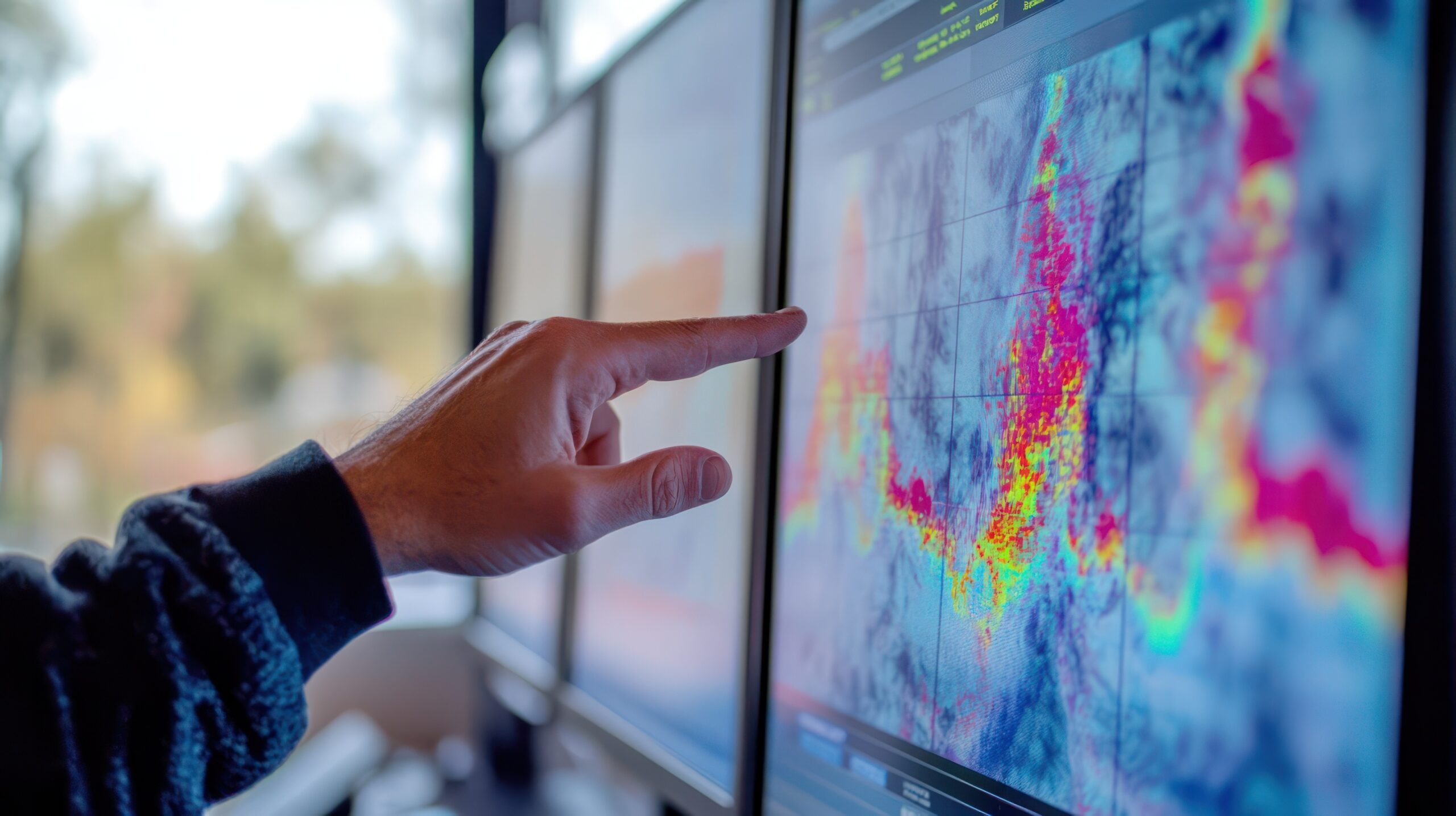Weather intelligence for the future: Crafting a strategic enterprise approach to changing environmental conditions
Continue readingKey takeaways
- On-site airline meteorologists provide real-time, high-confidence weather intelligence, working directly with airline dispatchers and ATC coordinators.
- During Hurricane Helene (Category 4), this airline-meteorologist partnership enabled airlines to determine precise, safe closure and reopening times, minimizing costly, system-wide disruptions.
- Embedded flight meteorology expertise from The Weather Company successfully mitigated unexpected challenges, including reduced operations at hubs like Charlotte (200 miles away) due to the hurricane’s extensive wind field.
- Consistent communication with the National Weather Service (NWS) and CWSU supports forecast alignment for hurricanes and flights, providing airlines with the unified information needed for confident operational planning.
When severe weather threatens flight operations, delayed or imprecise decision making can put safety, profitability, and system efficiency on the line. To achieve operational certainty, major airlines rely on The Weather Company’s FAA EWINS-compliant Weather Forecast Services. We provide embedded meteorologists that work shoulder-to-shoulder with dispatchers, ATC coordinators, and key decision makers, offering real-time, hyper-local guidance that a broad forecast simply can’t match.
This close, dedicated partnership is never more critical than when extreme weather threatens the grid — as was the case with Hurricane Helene.
Navigating Hurricane Helene
In September 2024, Hurricane Helene made landfall as a major Category 4 hurricane across Florida’s Big Bend, impacting major airline hubs in its path. When a major hurricane like Helene makes its way through the Southeast, it’s not just the coastal cities that feel the impact – the decision-making ripple effect can ground flights hundreds of miles away.
Our embedded meteorologists are seasoned in the nuanced forecast needs of airlines during storms like Helene. For airlines to maintain both airline safety measures and operational fluidity, they need more than a general forecast; they need real-time, targeted intelligence from experts who know their specific operation.
As one of our airline Meteorologist-in-Charge (MIC) experts, Hannah Cohn, put it, “We are an integral part of things now. Our embedded meteorologists transition from operational support to crisis management, offering a unique blend of active monitoring, proactive counsel, and reactive solutions.”
The proactive approach to a Category 4 storm
The most intense, hurricane-force wind impacts are often a foregone conclusion for a few stations – they must close for safety. Our embedded meteorologists guide the airline to determine when those stations need to be closed and help position staff, flight attendants, and pilots out of harm’s way.
However, the strategic value during a major storm is in managing what lies beyond. “We’re really not looking at the eye of the storm… we’re more looking at the outskirts of the storm, the periphery of the storm,” says Hannah. “The ones that are on the thresholds.”
These are the stations getting 30-35 knot gusts, potentially up to 40. Such wind speeds can still allow for operations, depending on direction and runway configuration, but they are right on the edge. This is where a subtle, tailored forecast makes the difference between an unnecessary system-wide disruption and a safe, minimized operational reduction.
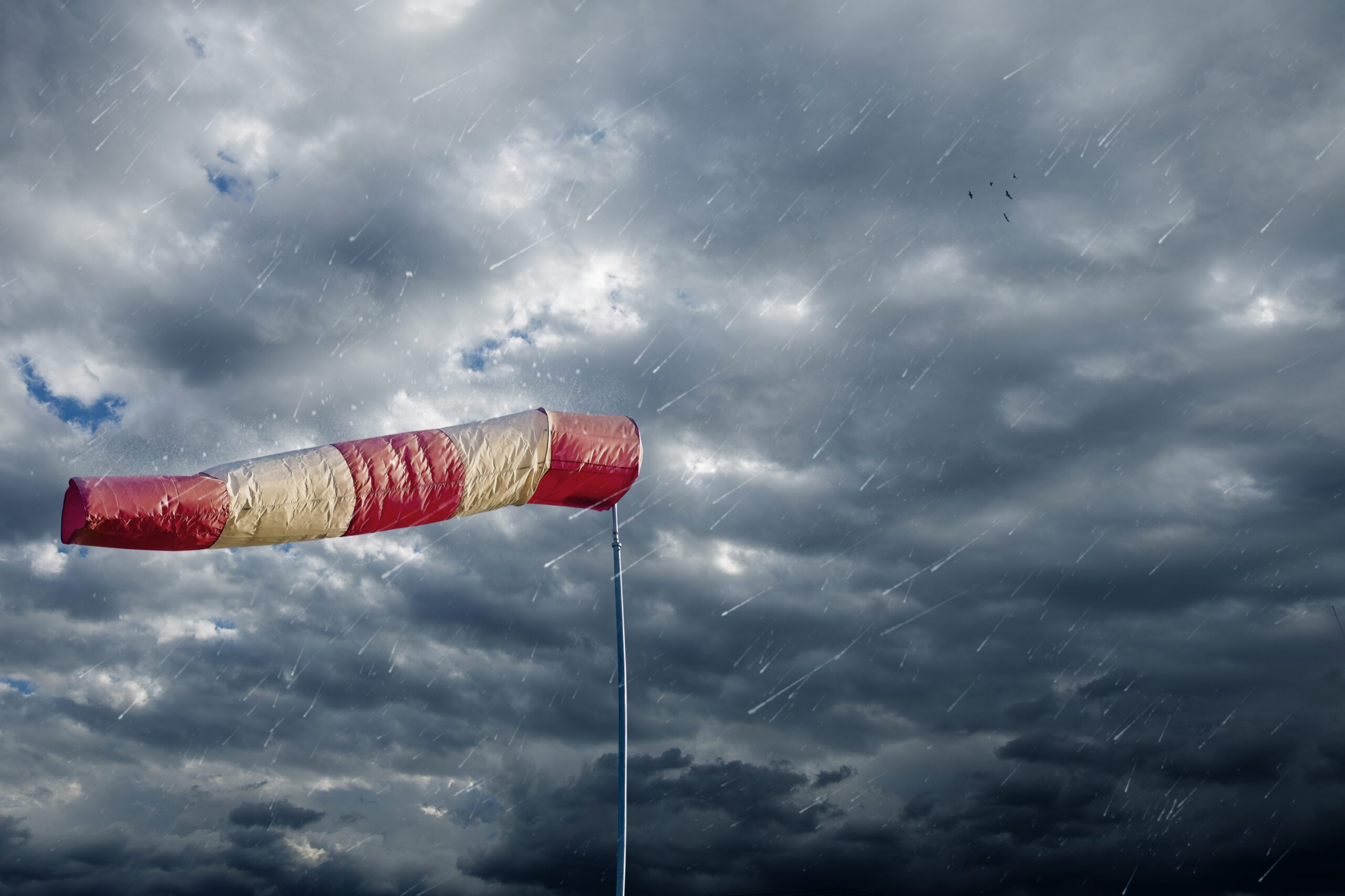
Winds near the hurricane’s edge strain operations and test safety limits.
Communication: The core of the strategy
Support is proactive, beginning up to 48-72 hours before a landfall event. The embedded meteorologist’s role during a storm like Helene means airlines are receiving consistent, clear communication and collaboration 24/7. Our teams:
- Issue detailed tropical tables: These intelligence packages — updated four times a day — provide storm forecasts, including wind tables, rainfall amounts (for flood risk), and come with detailed discussions on forecast confidence.
- Provide confidence: As our airline meteorologists engage with ATC coordinators, dispatchers, and key decision makers, conveying a high level of confidence in the forecast accuracy is critical to reinforcing their operational plan.
- Sync internal and external partners: We engage in constant chat and conference calls (three to four times daily) with the airline’s operational leaders to align all parties on evolving forecast conditions throughout the event. We also collaborate with the National Weather Service (NWS), and Center Weather Service Units (CWSU) to avoid a scenario where the airline is getting conflicting information, making their already tough decisions impossible.
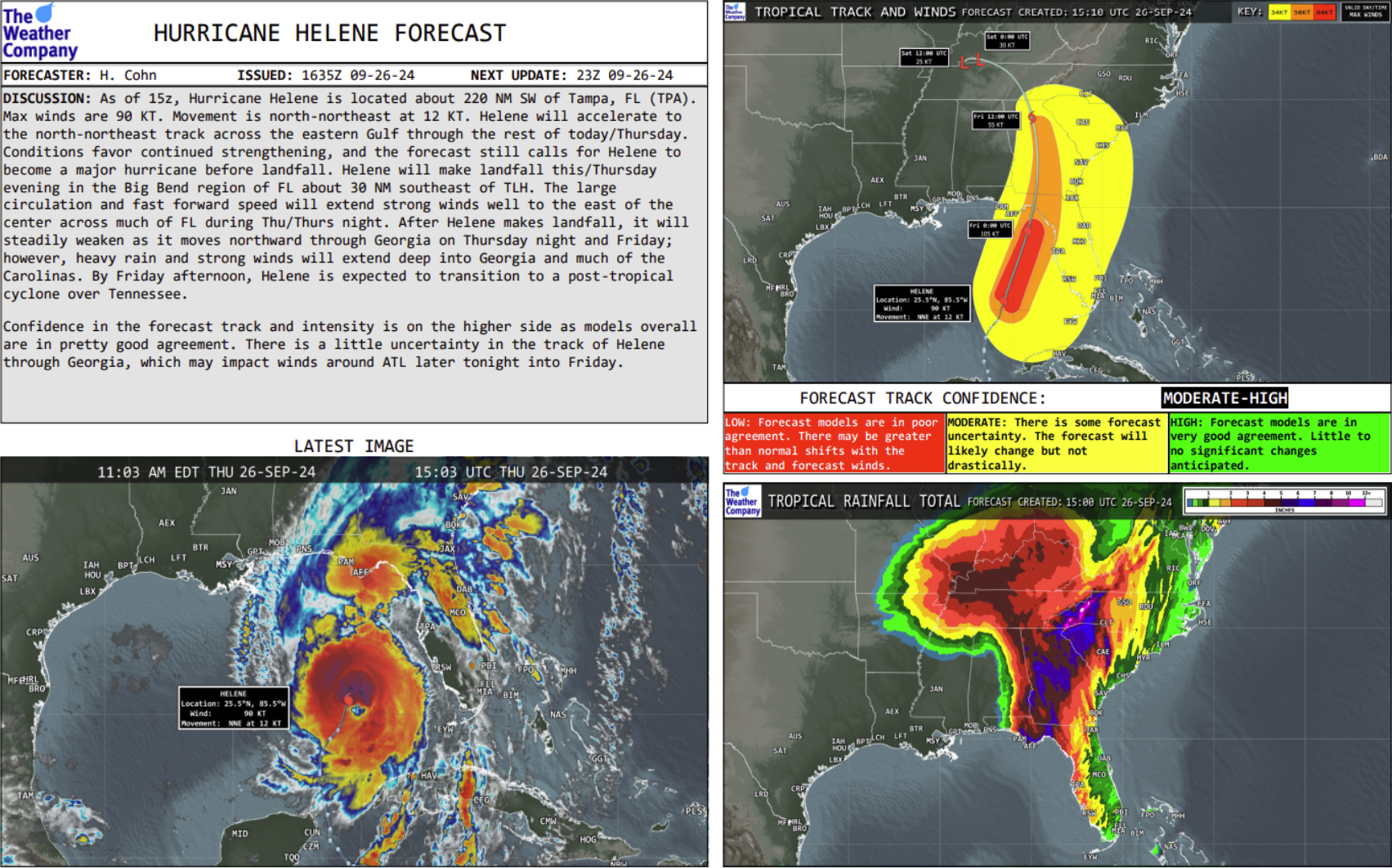
A clear and concise summary of the storm’s current state and its anticipated impacts.
The ripple effect: Beyond the eye of the storm
One of the most telling examples from Hurricane Helene wasn’t a station directly hit, but a major hub hundreds of miles away. Helene tracked 200 nautical miles west of Charlotte (CLT), yet the hub still had to significantly reduce operations. The extensive wind field created strong crosswinds — gusting up to 50 knots from the east-southeast — that made landings and takeoffs unsafe or impossible on many runways.
Our embedded meteorologists worked side-by-side with the ATC coordinators, helping the airline:
- Determine the rate: Collaborating on when to reduce the arrival and departure rate into Charlotte.
- Guide cancellations: Advising on the necessity of cancellations to clear the backlog and maintain airline safety measures.
- Support recovery: Immediately shifting focus to helping the airline get their operation safely back up and running once the winds subsided.
Forecasters and operational partners
Embedded airline meteorologists offer on-the-ground collaboration that mass-market forecasts can’t provide. It’s about solving problems on the fly and helping enable maximum safety with minimal economic impact. We become integral members of your operations teams, not just weather consultants, here to help you weather any storm.
Let's talk
To learn more about how The Weather Company’s embedded meteorologist services can support your airline operations center, contact an aviation expert today.
Contact us
